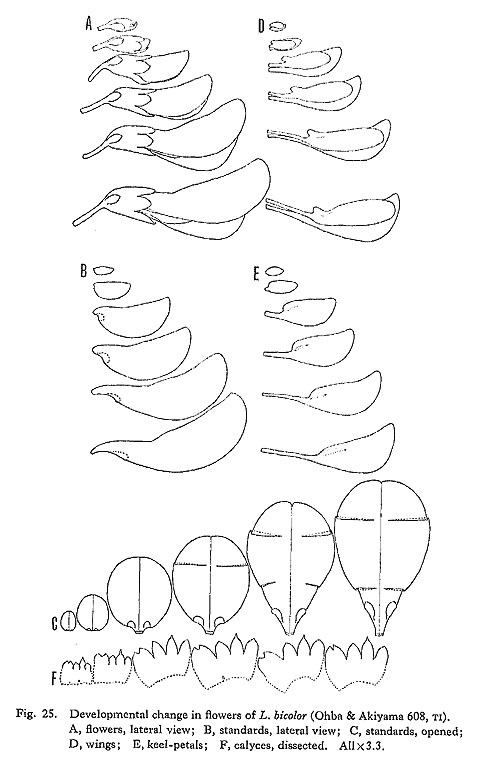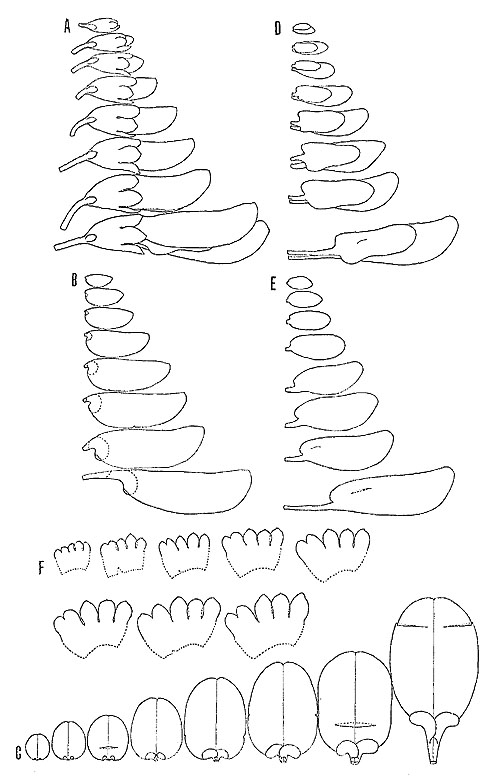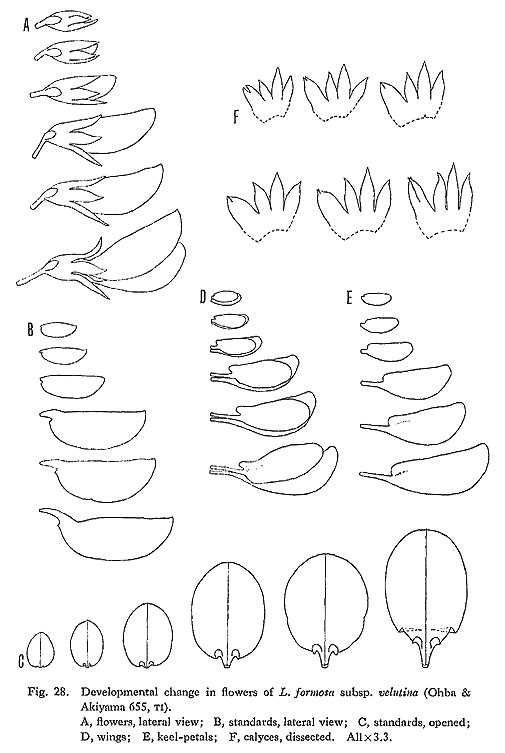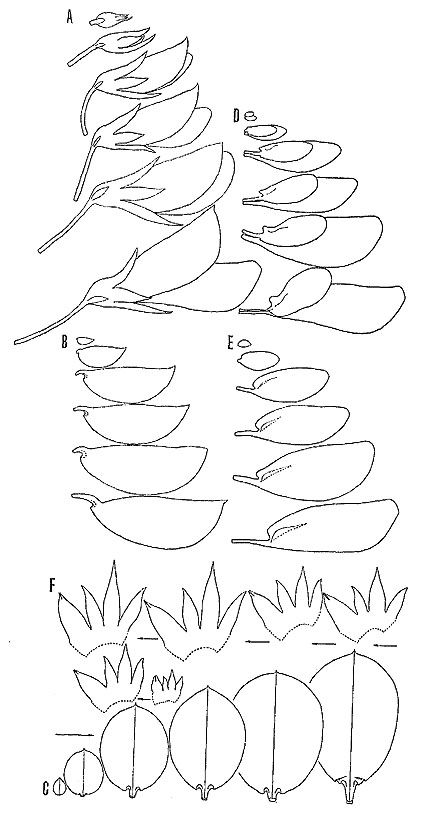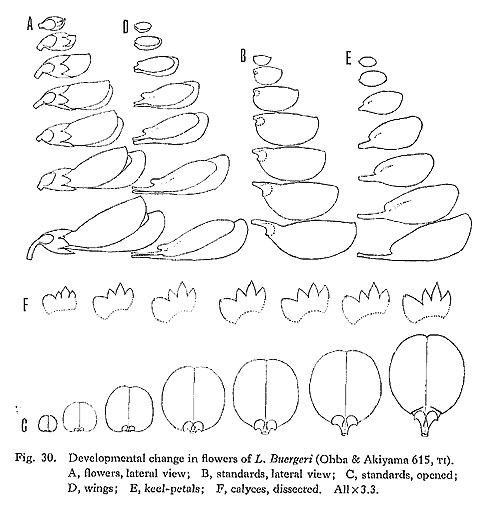Morphological Diversity and Variation
Developmental Changes of Floral Characters
|
To study the developmental changes of floral characters, young flowers of various sizes from approximately 1 mm long to fully developed were taken from a single individual plant and examined (Figs. 25-31).
Calyx Standard When flowers are less than 1-1.5 mm long, the auricle near the base of the standard is hardly recognizable urider a binocular microscope, although it becomes distinct when flowers are more than 2 mm long. The development of the auricle in L. bicolor, L. cyrtobotrya, L. formosa subsp. velutina, and L. patens stops when the flower is about 5 mm long, but in L. homoloba and L. Buergeri it continues to develop almost to the anthesis (Fig. 31). The shape of the auricle of the former four species is lunate to narrowly lunate, while the auricle of the latter two is well developed and reniform or broadly lunate. Wing and Keel-petal The wing-claw and the keel-petal-claw are very short during the very young stage in all flowers. Later, in L. bicolor and L. cyrtobotrya, the claw becomes more welldeveloped than in L. homoloba, L. formosa subsp. velutina, L. patens, and L. Buergeri. When the flower is about 4 mm long, the ratio of the length of the wing-claw to the length of the wing and the ratio of the length of the keel-petal-claw to the length of the keel-petal are larger in L. bicolor and L. cyrtobotrya than in L. homoloba, L. formosa subsp. velutina, L. patens, and L. Buergeri (Fig. 30). The characters described above are exhibited characteristically from the early stages. Thus, these characters are constant and useful in distinguishing species. |
